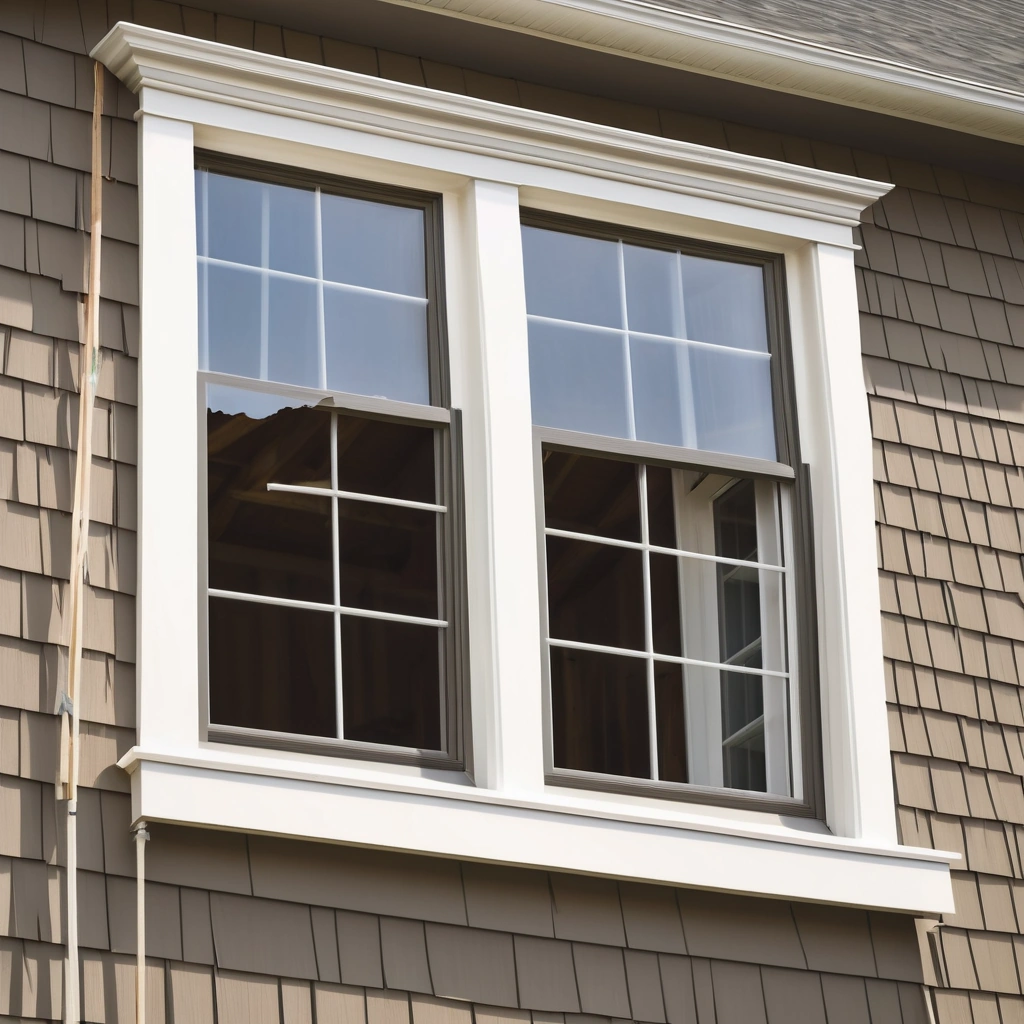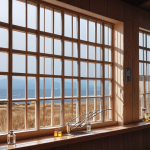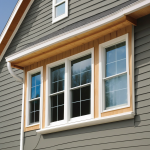The Ultimate Guide to Planning a Home Window and Siding Renovation
Introduction: Why Renovate Your Windows and Siding?
The windows and siding of a home are more than just aesthetic features; they are crucial components that protect the structure from the elements, contribute to energy efficiency, and significantly impact curb appeal. Over time, these elements can deteriorate, leading to drafts, water damage, and increased energy bills. Embarking on a window and siding renovation project can seem daunting, but with careful planning and execution, it can transform your home into a more comfortable, energy-efficient, and valuable asset.
This guide provides a step-by-step approach to navigate the renovation process, ensuring a successful and satisfying outcome. Beyond the immediately obvious benefits, a strategic home improvement project targeting windows and siding represents a significant investment in long-term sustainability and property value. Modern energy-efficient windows, such as those with low-E coatings and argon gas fills, can dramatically reduce heat transfer, leading to substantial savings on heating and cooling costs. Similarly, opting for advanced siding materials like fiber cement siding or insulated vinyl siding enhances thermal performance while providing superior resistance to weather, pests, and fire.
Understanding the interplay between these elements is crucial for maximizing the return on investment and creating a more resilient and comfortable living environment. The decision-making process should also include a thorough home renovation planning checklist to ensure no detail is overlooked. The decision to renovate also hinges on a realistic assessment of the window replacement cost and siding installation process. While initial costs may seem substantial, consider the long-term savings on energy bills and reduced maintenance.
For example, while vinyl siding remains a cost-effective and popular choice, fiber cement siding offers enhanced durability and aesthetic appeal, justifying a potentially higher upfront investment. Furthermore, neglecting proper window maintenance and siding maintenance can lead to premature deterioration, necessitating costly repairs or replacements down the line. Engaging a qualified contractor to perform regular inspections and address minor issues promptly can significantly extend the lifespan of your windows and siding. Navigating the complexities of home renovation requires careful contractor vetting.
Seek out professionals with proven experience, valid licenses, and comprehensive insurance coverage. Obtain multiple quotes and compare not only the price but also the scope of work, materials used, and warranty offered. A reputable contractor will provide a detailed breakdown of the siding installation process or window replacement cost, ensuring transparency and avoiding unexpected expenses. Remember that investing in quality workmanship and materials is essential for achieving lasting results and maximizing the value of your home. A well-executed renovation not only enhances curb appeal but also provides peace of mind, knowing that your home is protected and energy-efficient for years to come.
Assessing the Need and Setting a Realistic Budget
Before diving into the renovation, it’s crucial to conduct a thorough assessment of your existing windows and siding. This involves more than just a cursory glance; meticulously inspect for telltale signs of damage. Cracks, rot, warping, and blistering are all indicators of compromised structural integrity. Don’t neglect the less obvious areas; probe around window frames and siding seams for soft spots, which often signal hidden decay. A comprehensive home renovation planning checklist should include a detailed inventory of all windows and siding, noting the condition of each.
Furthermore, pay close attention to your home’s interior. Peeling paint, dampness, or condensation on window sills are red flags that warrant further investigation. These issues not only detract from your home’s aesthetic appeal but can also lead to more significant problems, such as mold growth and structural damage. Neglecting these warning signs can ultimately increase your window replacement cost and siding installation process expenses. Beyond visual inspections, conduct a practical assessment of your windows and siding’s performance.
Feel for drafts around window and door frames, particularly on windy days. These air leaks are a major source of energy loss, driving up heating and cooling bills. Examine your siding for signs of discoloration, mold, or pest infestations, all of which compromise its protective barrier. High energy bills are often a silent indicator of inefficient windows and siding. Compare your energy consumption to previous years; a noticeable increase without a corresponding change in usage patterns suggests that your home is losing energy due to inadequate insulation or air leaks.
Consider a professional energy audit to pinpoint specific areas of concern and quantify the potential savings from energy-efficient upgrades. Remember, addressing these issues promptly can significantly improve your home’s energy efficiency and comfort. Once you’ve established the need for window and siding replacement, the next crucial step is to establish a realistic budget. Begin by researching the average ‘window replacement cost’ and ‘siding installation process’ in your specific geographic area, as prices can vary significantly.
Obtain multiple quotes from different contractors, ensuring that each quote includes a detailed breakdown of labor, materials, and any associated fees. Explore various financing options, such as home equity loans, lines of credit, or government-sponsored energy efficiency programs. Understand the potential return on investment (ROI) of your renovation; energy-efficient upgrades not only increase your home’s value but also reduce long-term energy costs. For instance, replacing old, drafty windows with Energy Star-certified energy-efficient windows can save you hundreds of dollars annually.
Moreover, consider the long-term benefits of low-maintenance materials like vinyl siding or fiber cement siding, which can reduce future maintenance costs and increase your home’s curb appeal. When budgeting, remember to factor in not just the initial installation costs but also ongoing window maintenance and siding maintenance. While materials like vinyl siding are known for their low maintenance requirements, all siding types benefit from regular cleaning to prevent the buildup of dirt, mold, and algae.
Similarly, windows require periodic inspections and maintenance to ensure proper sealing and operation. Neglecting these routine tasks can lead to premature deterioration and the need for costly repairs or replacements down the line. By proactively addressing maintenance needs, you can extend the lifespan of your windows and siding and protect your investment. Furthermore, consider the long-term value and curb appeal improvements associated with quality home improvement projects. A well-maintained and aesthetically pleasing exterior not only enhances your enjoyment of your home but also increases its market value.
Researching and Selecting Appropriate Materials
Selecting the right materials is a critical decision that impacts both the aesthetics and performance of your home. Consider your climate, architectural style, and budget. For windows, options include vinyl, wood, aluminum, and fiberglass. Vinyl windows are a popular choice due to their affordability, low maintenance, and energy efficiency. Wood windows offer a classic look but require more maintenance, including regular painting and sealing to prevent rot and insect infestation. Aluminum windows are durable and weather-resistant, making them suitable for various climates, while fiberglass windows provide excellent insulation and strength, often exceeding the lifespan of other materials.
For siding, common materials include vinyl, wood, fiber cement, and metal. Vinyl siding is cost-effective and low-maintenance, requiring only occasional cleaning. Wood siding offers a natural look but requires regular painting or staining to protect it from the elements. Fiber cement siding is durable, fire-resistant, and can mimic the look of wood, providing a longer-lasting alternative. Metal siding is durable and long-lasting, but can be more expensive upfront, though its longevity often offsets the initial investment.
Research the pros and cons of each material and choose options that align with your needs and preferences. For example, in coastal areas, fiber cement siding is often preferred due to its resistance to salt water and humidity, mitigating concerns about deterioration from saline exposure. In colder climates, insulated vinyl siding can provide superior energy efficiency, reducing heating costs and improving overall comfort. Understanding the nuances of each material is a key step in effective home renovation planning checklist creation.
Beyond the basic material types, consider the energy-efficient windows options available. Low-E coatings and gas fills (argon or krypton) can significantly improve a window’s thermal performance, reducing heat transfer and lowering energy bills. Proper window maintenance, including regular cleaning and sealing, can extend the lifespan of your windows and maintain their energy efficiency. Similarly, siding maintenance, such as cleaning and addressing any damage promptly, will preserve its appearance and protective qualities. When factoring in window replacement cost, remember to account for both the material cost and the potential long-term savings on energy bills.
Investing in high-quality, energy-efficient materials can result in a significant return on investment over time. The siding installation process is another crucial factor to consider. Proper installation is essential for ensuring the longevity and performance of your siding. Hiring experienced professionals who understand the specific requirements of each material is crucial. Before committing to a contractor, thorough contractor vetting is essential. Check their licensing, insurance, and references to ensure they have the expertise and qualifications to complete the job successfully. A well-executed siding installation will not only enhance the curb appeal of your home but also protect it from the elements for years to come. For example, improper installation of vinyl siding can lead to warping or buckling, while incorrect installation of fiber cement siding can compromise its water resistance. Therefore, partnering with a reputable contractor is a vital component of any successful home improvement project.
Finding and Vetting Qualified Contractors
Finding a qualified contractor is essential for a successful renovation. Start by soliciting recommendations from trusted sources – friends, family, or neighbors who have recently undertaken similar home improvement projects. Online review sites and the Better Business Bureau can provide a broader perspective, but remember that these sources should be viewed as supplementary rather than definitive. Once you have a list of potential contractors, rigorous contractor vetting is paramount. Verify their licenses and insurance coverage with the relevant authorities.
Request proof of both liability and workers’ compensation insurance to shield yourself from potential financial liabilities arising from accidents or damages during the siding installation process or window replacement cost considerations. Obtain at least three bids to establish a competitive baseline and avoid overpaying. However, resist the temptation to automatically select the lowest bid. Delve deeper into the contractor’s experience, scrutinize their reputation through online reviews and references, and critically assess the quality of materials they propose to use.
Ask for a detailed breakdown of costs to understand where your money is going. Contact previous clients to gain firsthand insights into their experience with the contractor, focusing on aspects like communication, timeliness, and adherence to the agreed-upon scope of work. A reputable contractor should readily provide references and address your questions with transparency and patience. Before work commences, ensure that the contract includes a comprehensive scope of work, a detailed timeline with key milestones, a clear payment schedule tied to project completion stages, and comprehensive warranty information covering both materials and workmanship.
This home renovation planning checklist should also include clauses addressing potential change orders, dispute resolution mechanisms, and procedures for handling unforeseen issues. Specifying the type of siding (vinyl siding, fiber cement siding, etc.) and window brands (energy-efficient windows) ensures no misunderstandings arise. A well-written contract safeguards both you and the contractor, minimizing the risk of misunderstandings or disputes. Before signing any agreement, meticulously review the contract with a legal professional if necessary, and address any lingering concerns or questions to ensure complete clarity and peace of mind. Remember that proactive window maintenance and siding maintenance discussions should be included.
Managing the Renovation Process and Ensuring Long-Term Performance
Managing the Renovation Process and Ensuring Long-Term Performance extends beyond the installation phase; it’s about safeguarding your investment for years to come. Before the siding installation process or window replacement even begins, meticulous preparation is key. Start by creating a detailed home renovation planning checklist that includes not only material selection and contractor vetting but also a thorough assessment of the immediate surroundings. Clear the perimeter of your home, removing valuable items and covering vulnerable plants.
This proactive approach minimizes the risk of damage and ensures a smoother workflow for the contractors. Furthermore, open communication with your neighbors is crucial; informing them about the upcoming renovation and anticipated noise levels fosters goodwill and prevents potential conflicts. This small act of consideration can significantly improve the overall renovation experience. During the renovation, maintaining a consistent dialogue with your chosen contractor is paramount. Address any concerns or questions promptly to avoid misunderstandings and ensure the project stays on track.
Be prepared for unforeseen challenges, such as the discovery of hidden structural damage or unexpected weather delays, which can impact the window replacement cost and timeline. A reputable contractor will possess the expertise to navigate these issues efficiently, offering viable solutions and transparent communication. Regular site visits and progress updates will allow you to monitor the work and address any deviations from the agreed-upon plan. Remember, proactive engagement is vital for a successful outcome. Upon completion, a comprehensive final inspection is essential to confirm that the work aligns with your expectations and adheres to the contract specifications.
Scrutinize the installation, alignment, and sealing of both windows and siding, paying close attention to detail. Any deficiencies should be promptly addressed with the contractor and rectified to your satisfaction. For long-term performance, proper maintenance is crucial. For example, vinyl siding, a popular choice for its durability and affordability, requires annual cleaning to prevent dirt and mildew buildup. Similarly, energy-efficient windows benefit from regular inspections and maintenance of seals and weather stripping. Consider the differences between maintaining vinyl siding versus fiber cement siding; the latter often requires periodic painting to maintain its appearance and protective qualities.
To further extend the lifespan and optimize the performance of your renovated home, establish a routine window maintenance and siding maintenance schedule. This includes tasks such as cleaning windows regularly, inspecting caulk and seals, and promptly addressing any signs of damage or wear. For wood windows, applying sealant every few years can protect them from moisture damage and prevent rot. Investing in these preventative measures will not only preserve the aesthetic appeal of your home but also enhance its energy efficiency and structural integrity, ultimately maximizing the return on your home improvement investment.


